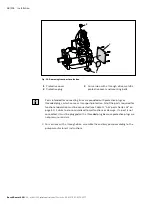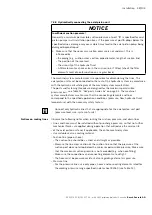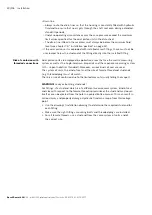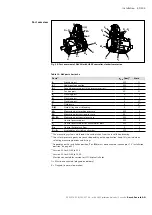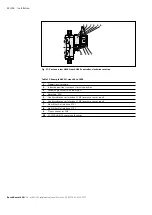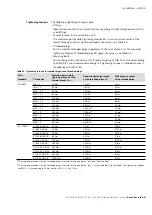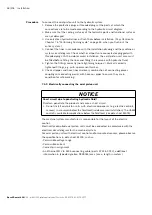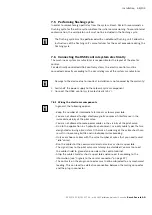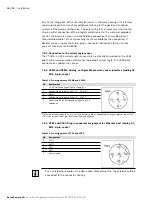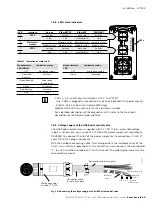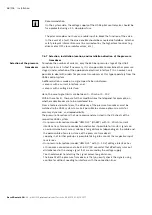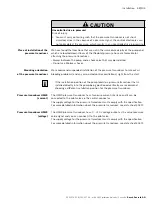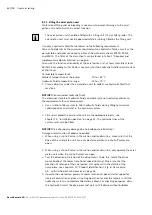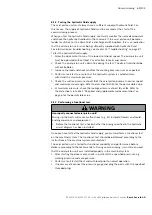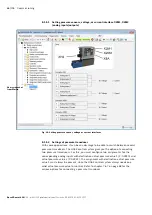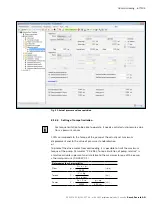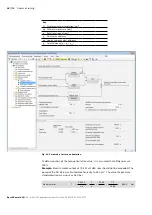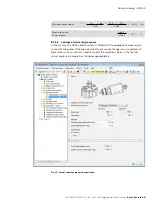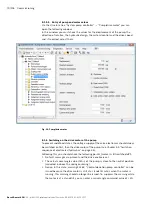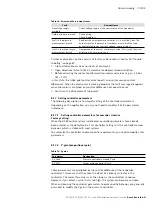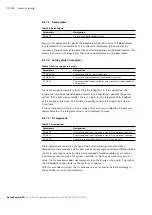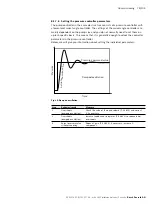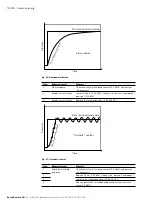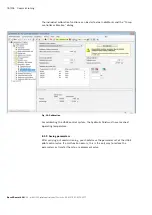
62/104 Commissioning
Bosch Rexroth AG
, A4... with HS5E pilot control valve/Series 3x, RE 92076-01-B/10.2017
8.1.1 Filling the axial piston unit
Professional filling and air bleeding is necessary to prevent damage to the axial
piston unit and to maintain correct function.
The axial piston unit should be filled with a filling unit (10 µm filter grade). The
axial piston unit must not be operated while it is being filled by the filling unit.
Use only a hydraulic fluid that conforms to the following requirements:
You can find details of the minimum requirements on hydraulic fluids as well as the
permissible and optimum viscosity in Bosch Rexroth data sheets 90220, 90221,
and 90222. The titles of the data sheets can be found in Table 1 “Required and
supplementary documentation” on page 6.
To ensure the functional reliability of the axial piston unit, at least cleanliness level
18/16/13 according to ISO 4406 is necessary for the hydraulic fluid for particle sizes
of 4/6/14 μm.
Permissible temperatures:
Ambient temperature at the pump:
-20 to +60 °C
Hydraulic fluid temperature range:
-20 to +70 °C
1.
Place a drip tray under the axial piston unit to collect any hydraulic fluid that
may leak.
nOTICE!
Contaminated hydraulic fluid!
The cleanliness levels of hydraulic fluids on delivery do not normally conform to
the requirements for our components.
▶
Use a suitable filter system to filter hydraulic fluids during filling to minimize
solid impurities and water in the hydraulic system.
2.
Fill and air bleed the axial piston unit via the appropriate ports, see
chapter 7.3 “Installation position” on page 42. The hydraulic lines of the
system must also be filled.
nOTICE!
Risk of property damage due to inadequate lubrication!
Damage or destruction of product possible!
▶
When using a shut-off valve in the suction and/or drain line, make sure that the
drive of the axial piston unit can only be started when the shut-off valves are
open.
3.
When using a shut-off valve in the suction and/or drain line, only operate the axial
piston unit when the shut-off valves are open.
4.
Test the direction of rotation of the drive motor. To do this, rotate the drive
motor briefly at the lowest rotational speed (inching). Make sure that the
direction of rotation of the axial piston unit agrees with the details of the
name plate, see chapter 5.10 “Product identification”, Fig. 8: Name plate
A4... with HS5E pilot control valve on page 35.
5.
Operate the axial piston pump at a lower rotational speed (starter speed for
internal combustion engines or inching operation for electric motors) until the
hydraulic system is completely filled and air bled. For checking purposes, drain
the hydraulic fluid at the drain port and wait until it drains without bubbles.

